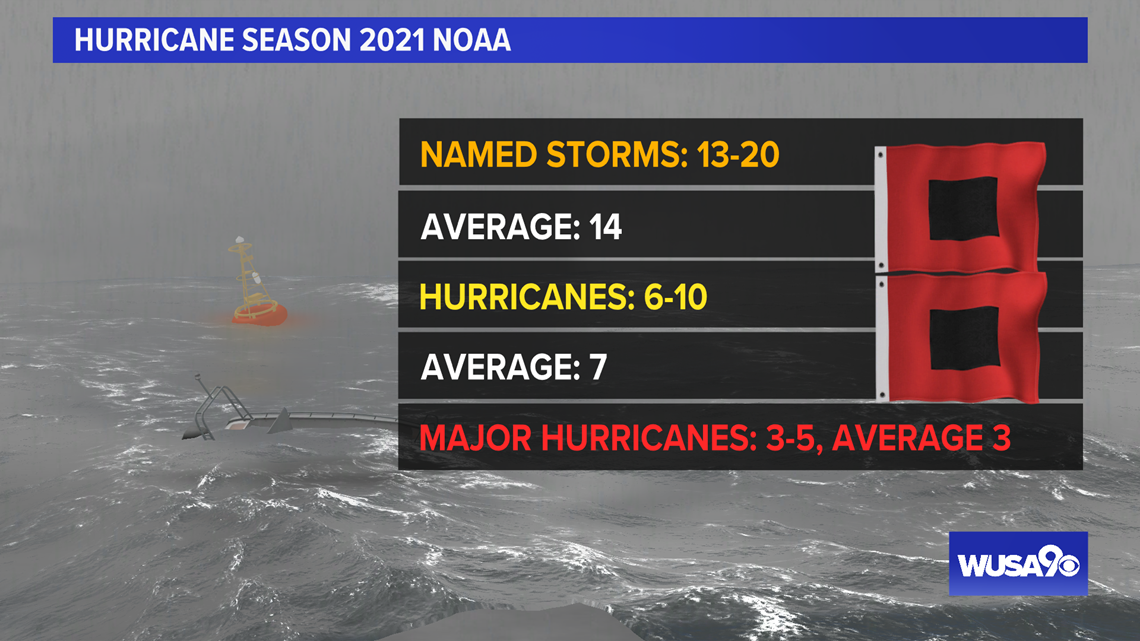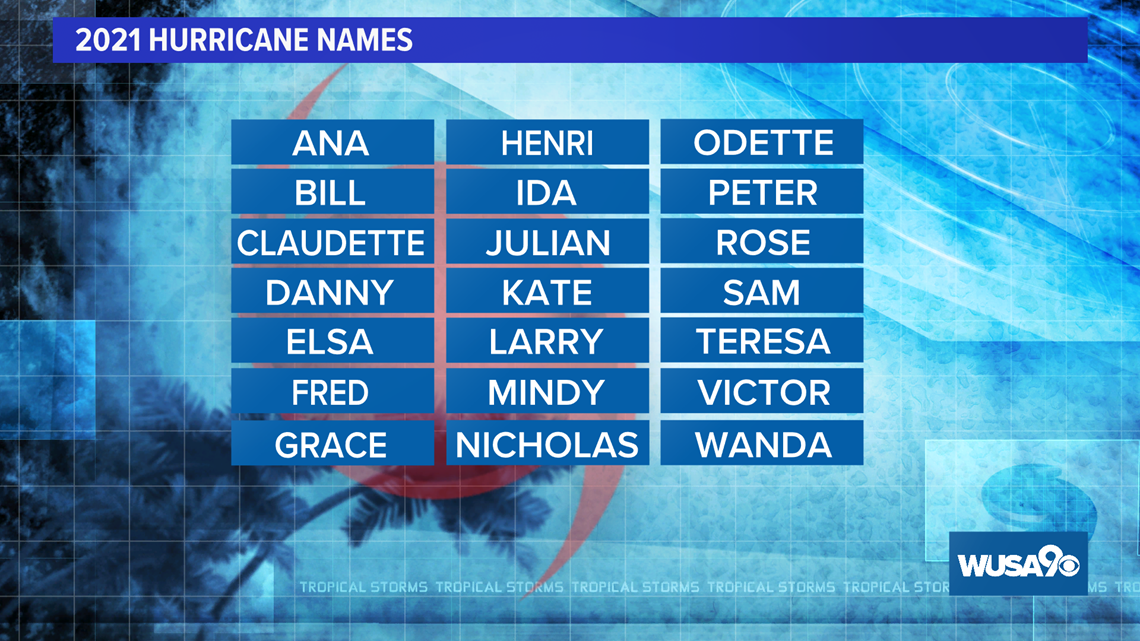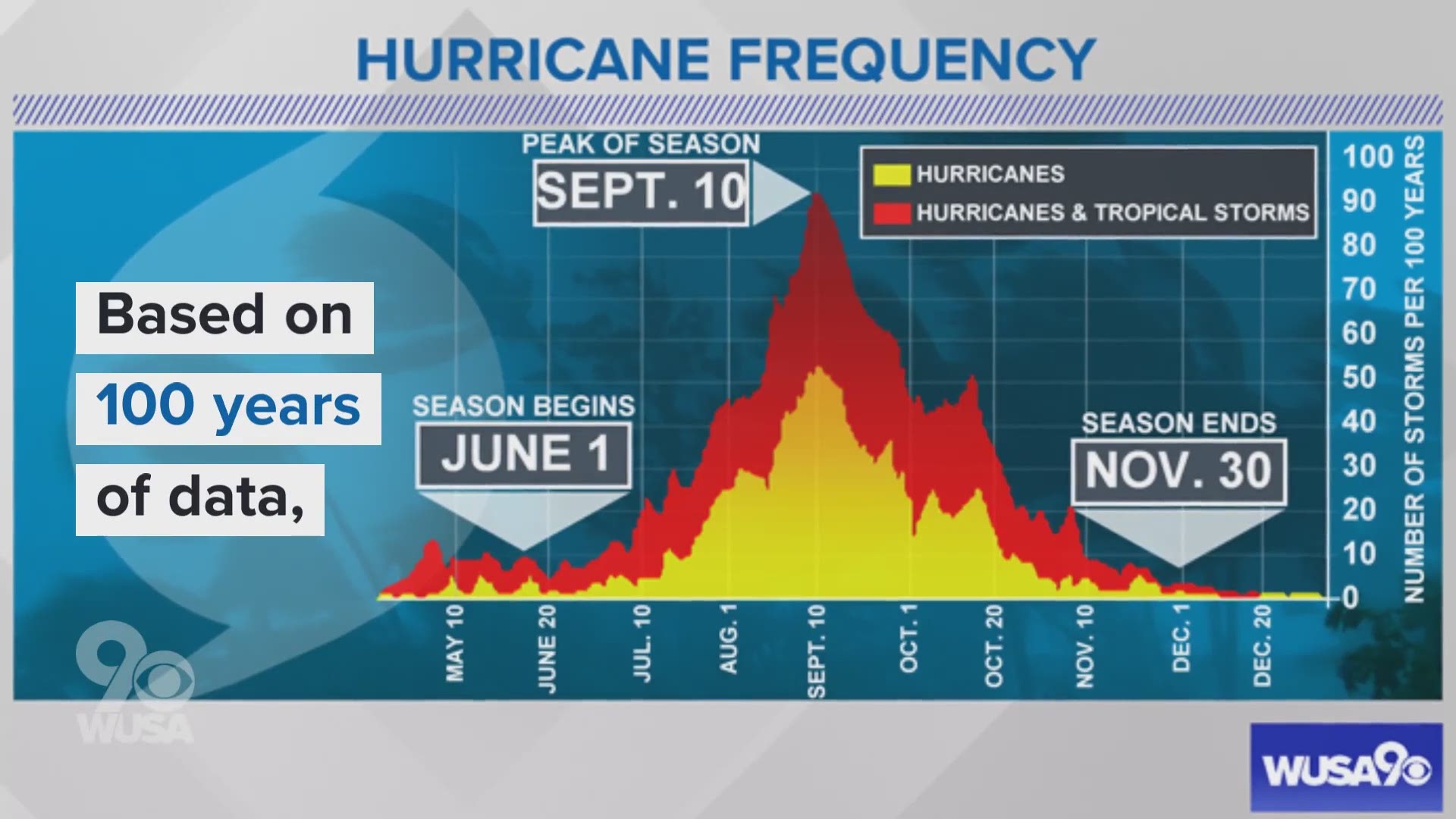WASHINGTON — It's going to be a busy hurricane season. Forecasters with the National Oceanic and Atmospheric Administration are predicting higher than average hurricane activity for the 2021 Atlantic hurricane season.
Forecasters released their analysis Thursday. Experts are predicting 13 to 20 named storms, with 6 to 10 becoming hurricanes and 3 to 5 major hurricanes.
There is a 60 percent chance for an above normal season, 30 percent chance for near a near normal season and a 10 percent chance for below normal activity.
Experts cited warmer ocean temperatures and weak trade winds as some of the reasons for above normal activity. ENSO neutral conditions are in place. If La Nina conditions return later in the season we could end up on the higher end of storm activity.
Forecasters said they do not believe that the 2021 season will be as busy as 2020, but still rather active.
"Although NOAA scientists don't expect this season to be as busy as last year, it only takes one storm to devastate a community," said Ben Friedman, acting NOAA administrator.
NOAA officials will monitor the forecast and revise if necessary in August.




The average hurricane season now has more named storms. Previously the average number of named storms was 12, now it is 14. The average number of hurricanes is now seven, compared to six previously. The average number of major hurricanes remains the same at three.
So why the change? The Climate Prediction center uses 30-year periods to get the averages. The old averages were based on the period 1981- 2010. This season the averages are based off of data from 1991-2020.
Hurricane season officially starts June 1 and goes until November 30, but tropical activity can start before the season.
The National Hurricane Center is already monitoring a potential subtropical cyclone development near Bermuda that could become the first named storm, Ana.
2020 was the most active hurricane season in 170 years, with 30 named storms.
Climate Change
Experts at NOAA said that climate change is not leading to more named storms, but rather stronger storms and higher rainfall rates. On a conference call, Matthew Rosencrans, lead seasonal hurricane forecaster at NOAA's Climate Prediction Center said better technology has lead to better detection of named storms. Rosencrans said research shows that climate change has lead to a 3 percent increase in rainfall rates and it has been linked to storms being able to better reach category 4 and 5 status. A category 4 storm produces winds between 130 and 156 mph. A category 5 storm produces winds up to 157 mph and stronger, leaving catastrophic damage in the path of the storm.

